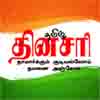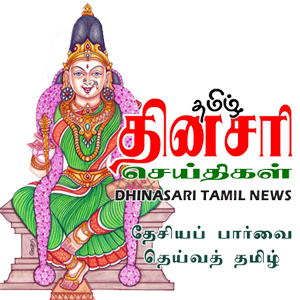
“We know that it was Sheikh Abdullah who was asked to meet B R Ambedkar by Jawaharlal Nehru, to explore special status for Kashmir. Ambedkar put his foot down. “
By Narasimhan Vijayaraghavan

We know that it was Sheikh Abdullah who was asked to meet B R Ambedkar by Jawaharlal Nehru, to explore special status for Kashmir. Ambedkar put his foot down. Nehru chose N Gopalaswami Ayyangar as his man friday (some say, a stooge) to do his bidding. Rest is history.
We need to know how Sheikh Abdullah came on the scene in the first place. Sheikh Mohammed Abdullah played a key role in the state’s accession to India in 1947. He was also the first Prime Minister of the state.
In the early 1940s, Abdullah was a vocal critic of the rule of Maharaja Hari Singh, the Hindu ruler of Kashmir. He argued that the Maharaja was corrupt and oppressive, and that he should be replaced by a popular government.
In 1946, Abdullah founded the National Conference, a political party that campaigned for self-rule for Kashmir.
In October 1947, Pakistan-backed tribesmen invaded Kashmir. The Maharaja appealed to India for help, and Indian troops were airlifted into the state.
On 26 October 1947, the Maharaja signed the Instrument of Accession, making Kashmir an Indian state.It was as part of the accession agreement, the Maharaja agreed to set up an interim government with Sheikh Abdullah as Prime Minister. The interim government was formed on 5 March 1948.In 1953, Abdullah was dismissed from office by the Maharaja’s son, Yuvraj Karan Singh. He was arrested and detained for over a year.
Abdullah was released from prison in 1958. He continued to be a leading figure in Kashmiri politics, and he was elected Chief Minister of the state in 1975. He remained in office until his death in 1982.
Sheikh Abdullah was a complex and controversial figure. He was a champion of Kashmiri self-determination, but he was also a pragmatist who was ‘willing to work with India’. He ‘was a flawed human being who made too many mistakes’, said the journalist Girilal Jain. It Sheikh Abdullah’s legacy that continues to this day as a major influence in Kashmiri politics.
During the SC proceedings, there is a lot of focus on Presidential Orders of 1954. They were replaced by Aug,2019 orders of the Modi administration and that is under the scanner. The Presidential orders of 1954 on Kashmir under Article 370 of the Constitution of India were a set of orders issued by the President of India, Rajendra Prasad, on 14 May 1954. The orders were issued with the concurrence of the Constituent Assembly of Jammu and Kashmir, and they sought to implement the terms agreed to in the Delhi Agreement of 1952.
ALSO READ: Daily Nuggets on Art.370 legacy-9
It is this ‘consent/concurrence/recommendation’ from J$K Constituent Assembly, which was in vogue till 1947, that is relied on upon by the challengers, as the ‘condition precedent’ which was flouted by Modi government.
The Presidential orders of 1954 gave Jammu and Kashmir a special status within the Indian Union. The orders exempted the state from the application of several provisions of the Indian Constitution, including those relating to citizenship, ownership of property, and fundamental rights. The orders also gave the state the power to make its own laws on a number of subjects, including education, agriculture, and forests.
The Presidential orders of 1954 were controversial from the start. Some people argued that they gave Jammu and Kashmir too much autonomy, and that they made it difficult for the Indian government to effectively govern the state. Others argued that the orders were necessary to protect the interests of Kashmiris, and that they gave the state a degree of self-determination that was not available to other states in India.The Presidential orders of 1954 remained in effect for over 60 years. They were revoked by the Government of India on 5 August 2019.
ALSO READ: Daily Nuggets from Art.370 legacy-12
Contextually, we need to take a look at a couple of earlier constitution bench verdicts of 1969 vintage in Sampath Prakash and 1972 origins in Mohd. Maqbool Damnoo, where Art.370 was considered and parts thereof were dissected and delineated upon.
The constitutional student in me takes over. Is there an apparent conflict between the two verdicts. While in Sampath Prakash the apex court alluded to a time-line for Art.370(3) till J&K constituent assembly expiration in 1957, Damnoo, took a different view. Could this ‘conflict’ be availed by the present constitution bench as a safe passage to refer the ‘conflict’ to a seven judges’ bench, sort of ducking the issue? Or there was no ‘conflict’ at all, as the two verdicts focused on different portions of the provisions and not on issues now on the table. Without getting too technical, we shall explore.
(Author of Constitution & its Making/Working,OakBridge,is practicing advocate in the Madras High Court)





